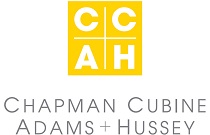
|
Finding Long Term Value for Nonprofits in a Multichannel World
|
|
Posted by Guest Blogger at Oct 23, 2014 07:00 AM CDT
|
This article was written by guest authors Angelo Licursi, Vice President, Research Advisory Services, Paradysz, and Philip Fertick, Director of Acquisition and New Media, Feeding America.
 We live our lives in an omnichannel manner; we consistently, and fluidly, move between online, offline, social, and direct means and resources to achieve our daily demands. In following suit with these evolving cultural norms and habits, fundraising programs are no longer relegated to direct, siloed channels, but now operate in an omnipresent environment where all channels influence and interact with one another.
We live our lives in an omnichannel manner; we consistently, and fluidly, move between online, offline, social, and direct means and resources to achieve our daily demands. In following suit with these evolving cultural norms and habits, fundraising programs are no longer relegated to direct, siloed channels, but now operate in an omnipresent environment where all channels influence and interact with one another.
In addition to adapting to this multilayer approach, nonprofits now also have to battle fierce and growing competition for fundraising dollars. Donors today have more options to support a cause near and dear to their hearts because of the oncoming wave of nonprofit organizations entering the scene. With more choices and more technological resources to interact, donors are inundated with fundraising opportunities, and nonprofits must continuously strive to differentiate their organization and their ask.
Nonprofits no longer have the option of dabbling in multichannel campaigns – it is now a prerequisite. However, despite these increasing demands for omnipresent engagement, many organizations are asking their fundraising teams to “do more with less,” to find ways to grow the program without the supporting budget to do so. To meet this challenge, nonprofits need to maximize the potential ROI for every fundraising initiative, channel and campaign.
Feeding America Goes Multichannel
Feeding America, the nation’s leading domestic hunger relief charity, recently underwent changes that resulted in re-focused organizational initiatives around digital and multichannel strategies. Direct mail, while traditionally the most successful avenue for acquiring new donors, and also the most expensive avenue, was still providing the organization with a steady and unrestricted stream of revenue, however, new online donor metrics were performing better. Online donors responded to acquisitions and asks with higher average gifts than their offline counterparts.
As Feeding America focused on looking ahead to align with donors’ increasingly digital-first mindsets, they also had to accommodate the challenge of not abandoning core components of their audience who still prefer traditional direct mail. Feeding America looked to improve the long term value of ALL their programs. Investing and testing in multiple environments allowed Feeding America to more accurately determine where their higher value donors engaged and how best to facilitate continuous engagement. To implement the testing and deployment of long term value based campaigns, Feeding America turned to their fundraising partners including multichannel agency, Paradysz.
Paradysz, working in tandem with Feeding America and their fundraising partner, Thompson Habib Denison, determined that improving ROI can start with acquiring higher value donors. Lifetime value analysis showed that direct mail acquired donors that give more in acquisition tend to stay on file longer and give more over the course of their lifecycle.
From there, Paradysz developed a streamlined targeting acquisition solution to upgrade the value of new donors. Offer-to-audience test strategy focused on targeted ask array among high gift prospect segments to maximize their giving potential, and ultimately to improve the ROI on the direct mail acquisition efforts. This implementation resulted in a 40% lift in gross revenue from high value segments as well as a 64% lift in gift averages from marrying higher asks to higher value audiences.
Extending the Giving Relationship
Some organizations make the mistake of thinking that a donor’s established giving value is at maximum capacity, but in reality, it’s possible to extend the giving relationship beyond set giving amounts and enhance the long term value of the donor relationship. Additionally, adopting an acquisition strategy that targets prospects likely to contribute higher long term value can also be implemented to develop more significant and sustainable relationships. To distinguish and cultivate those donors correctly, organizations should follow these three key steps:
- Investing in donor analytics that answers the following questions:
- Who are your best donors?
- How do you acquire them?
- What relationships are you cultivating with them?
- Developing streamlined segmentation and targeting practices that build off the key findings from your donor analysis.
- Testing new marketing techniques (offer, ask, channel, season cadence, etc.) to maximize the ROI from your segmentation and targeting practices.
Nonprofits should not be afraid to ask for what they want – higher gift values – but in asking for more, they need to consider who to ask, how to ask and how much to ask for. Implementing a sound long-term value plan through analytics, segmentation and continual testing gives organizations the insights they need to develop long term relationships with high value returns.


















